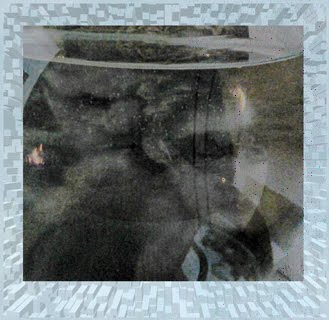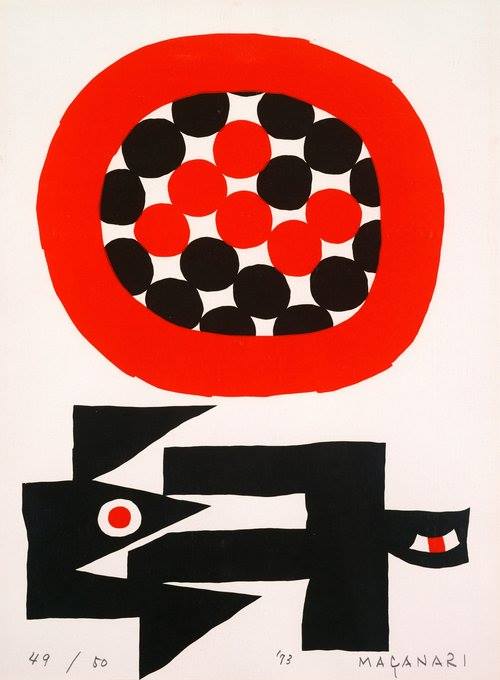Pour le Français prenez la touche «translate» à gauche
« Though it is distasteful to some, scientists must accept theories that agree with experiment, not their own preconceived notions. »
-Stephen Hawking and Leonard Mlodinow
The Grand Design p. 72Introduction
The article that follows describes the experiments I did
with Amaryllis bulbs in the spring of 2012 and 2013 to verify the following
hypothesis:
[Gravity propelled forward by
the Alignment Geometries of Celestial Mechanics (AGCM)] plays a major
role in the evolution of life. Gravity with AGCM are the architects of all DNA including
human DNA, and account for biodiversity on Earth. Gravity with AGCM will override DNA in
offsprings if the AGCM of the times induce a feature not yet included in
a species. This law of nature will be found at work on any planet within any solar system
where life is evolving.
My methodology is based on René Descartes’ assertion that
given a state of “initial conditions”* it should be possible to make predictions as to what will happen to a system
within a given period of time. The laws of nature will determine how that
system will evolve from those initial conditions over time*2 and prove the predictions if the hypothesis being studied is correct. This is
also how scientific experiments are done today but with more sophisticated
equipment. I used very modest tools to measure my subjects: a ruler and a
moisture meter. I predicted a very simple outcome: a difference in the height
of the stems of two different groups of Amaryllis flowers planted at two
different chronological times with two different distribution of mass, AGCM, at
the moment of each potting. I use Amaryllis bulbs for my experiments because
they produce easy to observe stems within a short amount of time, usually
between 4 to 6 weeks.
Better-equipped scientists may go further with this
experiment and measure more elements than I did. My objective at this very
primitive stage of exploration is just to prove that it happens so the concept
can evolve to more advanced studies. We must first understand how the
hypothesis works in order to later produce technology that will be useful in a
variety of applications.
The concept for my “set of initial conditions” is to
generate two sets of Amaryllis bulbs that are of the same species with the same
expected growth patterns within a given time frame. Then transplant each set at
two different times with two different distributions of mass on the eastern
horizon at the moment of planting the bulbs. This way I am slicing into the
«…infinite and unceasing operation of endless intertwined causes*3…»
to observe what is the underlying process that links the microcosm to the
macrocosm. The positions of the Moon and planets, or the distribution of mass,
within our solar system will vary in reference to the Earth coordinates where I
will plant the bulbs at the two separate times of planting. The plantings occur
at the same Earth coordinates but in two different time frames. The consequence
of this will alter the quantity of G force being loaded*4 into the bulbs as their metabolisms are being activated to make flowers. Also
there will be a divergence in the angle in which the force is moving towards
the newly planted bulbs from one time frame to the next. One group receives the
message from gravity to produce taller stems and the other group will produce
shorter stems because it will be held back by gravity that instructs the plants
to slow down.
This experiment answers Robert L. Jaffe’s*5 question in his brilliant article TIMES OF OUR LIVES «How did the chemistry of
life become locked onto the rhythms of celestial mechanics?» By gravitational
modulations propelled forward by ACGM affecting all living systems since life
emerged on Earth starting at the molecular level as gravity clumped particles
together.
About gravity
The force of gravity has been at work since the Big
Bang giving substance to our known universe. Isaac Newton’s discovery of
gravity and his law of universal gravitation with Albert Einstein’s theory of
general relativity opened the way for new technology that is revealing more and
more facets of this important force. The extraordinary work by NASA with the
Hubble telescope, the Casini Mission, and the cameras that have the capacity to
photograph early universe radiation that illustrates the clumping action of
gravity on particles after the Big Bang*6 are the inspirations for my hypothesis. Gravity is the weakest force in the
universe yet it bends light. It has intensity and direction like a vector. It
generates mass and fusion that will form stars. It maintains planets in orbit
around the Sun. It plays an important role in the production of Black Holes.
I have established the role of gravity in the Amaryllis
experiments with the articles Moons of Saturn, gravity and the evolution of life and The Phenomena of Evolution Captured.
Although scientists describe gravity as a constant force, on
Earth it equals 1 G, my experiments show that even minute changes in the G
force field will have huge impact on life forms. I believe this is so because gravity
bends light, and affects particles. Gravity does not change a subject at
once but affects its biochemistry that then affects its metabolism that then
alters the mass of the subject. Gravity is
a consummate artist fashioning infinite forms and behaviors as we can now
observe again thanks to NASA and its great scientists, and this is what my
experiment is designed to illustrate.
Since I want to verify the effect of gravity on
evolution, I must see if it will alter the growth of same plant species within
a reasonable time scale by producing the slightest yet constant difference
between the two groups. If we can observe two completely different
characteristics consistently in each of the two groups this will validate my
hypothesis. Then we can deduce how the interactions of AGCM and gravity over
billions of years of evolution affected the rich diversity and progression of
life forms.
The experiment
Although I have made precise calculations for the
time-space of the planting, and prepared a mathematical diagram of the
distribution of the mass within the solar system at those times, I will not
publish them here. I have kept rigorous records and photographed as many
pertinent details I could should scientists wish to examine them within a
professional collaboration. Only after such time will I publish my
calculations.
The first experiment with Amaryllis bulbs was done in
the spring of 2012. I am a contemporary artist and I wanted to present the
Amaryllis experiment as a living installation to conclude Phenomene Art XI:
Force. The object of this Phenomene Art was to reveal the force of gravity by
letting it sculpt the living substance of the plants. My paintbrushes are my
precise calculations; my canvas, the living flesh of the plants; the object to
be illustrated, the effect of gravitational modulations on life forms. Visitors
of the exhibit could witness with their own eyes what I am showing you with
photography: how the chemistry of life is entangled with celestial
mechanics. Of course I had to make sure
I was right about my concept before bringing it to the public. In the first
experiment, I succeeded in cultivating two groups of two different sizes by
transplanting them on the same day but with 8 hours difference between them.
The reason for this time difference is to allow the mass of the solar system to
shift in relation to the place where I would sow the plants. The group that
produced the shortest stems was planted first thus demonstrating that the
sequential fact of being planted first held no advantages on the size the plant
would attain. Also it must be noted that I do not take the leaves into
consideration in this study because Amaryllis bulbs produce abundant foliage
once the flowers have bloomed to regenerate the bulb. I want to focus on one
simple measurable element that can be easily seen by anyone, the stem.
After submitting my exhibition proposal to many
institutions, of many disciplines, and having the project declined, I decided
to do a new Amaryllis experiment and this time measure the soil moisture. I
realize how new my model of evolution of life is and that it was only my second
attempt and more will need to be done before it is accepted as a law of nature,
but I was 100% convinced my hypothesis would work. So I once again proceeded
with the experiment.
I had calculated two different time frames within
which I would plant 3 Amaryllis bulbs of the same variety each time. For the
2013 experiment I bought 6 Hippeastrum Benfica Amaryllis from the company Royal
Colors. This variety typically produces plants whose stem height can be between
30 cm to 60 cm. In this experiment, I do not expect a whole new species to
manifest; I expect one striking feature to differentiate between one group and
the next. If this happens, it means evolutionary features are conditioned by the
times, appear slowly, one change at a time induced by the command of
gravity on the living being. That is why in the hypothesis I claim gravity will
override DNA to bring out of the living being those qualities intimated by the
AGCM of the times. In my experiment, I expected gravity to promote a
difference in size and character in the two groups.
To produce the TALL plants I calculated a time frame
when there was a strong accumulation of planets on the eastern horizon. There
would be more mass therefore more G force aligned with that point of the
Earth’s coordinates as it referred to my position on Earth.
To produce the SMALL plants I calculated a time frame
when there were no planets on the eastern horizon so the mass would relate to
the Earth coordinates where the planting occurred from a different angle than
the TALL group.
In this experiment I also verified the quantity of
water being consumed by the plants to understand the impact of my hypothesis on
the ecology. This point intrigued me particularly because of the popular belief
that the abundant planting of trees is the solution to our ecological woes. My
experiment demonstrates that there could be uncalculated factors in this
practice that could seriously damage both the environment and the plants.
I planted the six bulbs from the 2012 experiment and six fresh bulbs. I planted 3 bulbs from 2012 on April 19 2013 ( 1, 2, 3 ); 24 hours later, April 20 2013, I planted 3 fresh bulbs ( A, B, C ). These six bulbs were determined to produce the TALL group. Their temperament should be aggressively productive reminiscent of male athletes. 25 hours and 20 minutes later, on April 21 2013, I planted the SMALL group consisting of the remaining fresh bulbs ( D, E, F ) and the 3 left from the 2012 experiment ( 4, 5, 6 ). These six bulbs should produce smaller stems with a temperament reminiscent of a coquettish woman that takes her time getting beautiful. I would measure their progress at regular interval to document their growth and attitude. All plants had the same quantity of moisture retaining potting soil and received the same amounts of water for the first month. I must note also that what I was looking for with plants 1, 2, 3, 4, 5 and 6 is whether they will show any mutations.
I planted the six bulbs from the 2012 experiment and six fresh bulbs. I planted 3 bulbs from 2012 on April 19 2013 ( 1, 2, 3 ); 24 hours later, April 20 2013, I planted 3 fresh bulbs ( A, B, C ). These six bulbs were determined to produce the TALL group. Their temperament should be aggressively productive reminiscent of male athletes. 25 hours and 20 minutes later, on April 21 2013, I planted the SMALL group consisting of the remaining fresh bulbs ( D, E, F ) and the 3 left from the 2012 experiment ( 4, 5, 6 ). These six bulbs should produce smaller stems with a temperament reminiscent of a coquettish woman that takes her time getting beautiful. I would measure their progress at regular interval to document their growth and attitude. All plants had the same quantity of moisture retaining potting soil and received the same amounts of water for the first month. I must note also that what I was looking for with plants 1, 2, 3, 4, 5 and 6 is whether they will show any mutations.
First the new plants A, B, C, D, E and F
After two weeks, A, B and C demonstrated their fiery
nature with A taking the lead being the tallest and most prolific. D, E and F
were noticeably slower, almost cautious in their development. My prediction had
come true in terms of the observed temperament separating the two groups. Now
lets look at the numbers. I present them to you as total sums of stem height
per group and total amount of moisture per group. I measured the lengths in
centimeters and my moisture meter measures in divisions of 10, I took 3
measures of moisture per plant at a time, so I report the total over 90 it
being full capacity moisture per group.
TALL SMALL
Week 1)
0 cm, 43/90 0
cm, 49.5/90
Week 2) 113.5
cm, 38.5/90 20
cm, 49.5/90
Week 3) 215
cm, 58.5/90 96
cm, 65/90
Week 4) 316.5
cm, 47/90 251
cm, 36/90
In Week 4 the water levels shifted from the TALL
taking in more water to the SMALL taking in more water. TALL was in full bloom
while SMALL was gaining momentum to produce its flowers. It was also
interesting that plant B that had been the consistent smallest in TALL also
consumed less water during the first four weeks.
A ) produced 154 cm, B ) produced 145 cm, C ) produced
150 cm Total: 449cm
D ) produced 88 cm, E ) produced 88 cm, F ) produced
96 cm
Total: 268 cm
Last years plants 1, 2, 3, 4, 5 and 6
I transplanted the TALL from last year within the time
frame that would produce tall plants, and the SMALL from last year with the
SMALL from this year.
TALL
Plant 1 died. Plant 2 produced two mutated flowers: a
ten-petal mutation and a five-petal mutation. One flower was normal. 3 produced
a five flowers corona, three bloomed normally, and the other two remained
dormant. What is intriguing is the focus on the number 5 in the mutated design
of the flowers and the number 3 which is the total of flowers each plant
produced.
SMALL
Plant 4 died. Plant 5 produced no stem, no bloom. 6
produced a fascinating mutation that merged two stems into one and produced a
corona of six normal flowers of six petals each! Here it is the number 6 that
prevails in the flowers!
The fact that last years plants mutated is an
important clue on how my hypothesis works to explain evolution. Once again the
TALL produced more total stem length than SMALL.
Conclusion
Some will argue that my results were caused by
coincidence. I will repeat the quote from Stephen Hawking and Leonard
Mlodiniv’s The Grand Design:
«…given a state of “initial conditions”* it should be possible to make predictions as to what will happen to a system
within a given period of time. The laws of nature will determine how that
system will evolve from those initial conditions over time*2 and prove the predictions if the hypothesis being studied is correct.»
 * “Initial
conditions” as described in The Grand Design, Stephen Hawking and Leonard
Mlodinov: «Those describe the state of a system at the beginning of whatever
interval of time over which one seeks to make predictions. With a given set of
initial conditions, the laws of nature determine how a system will evolve over
time, but without a specific set of initial conditions, the evolution cannot be
specified.»
* “Initial
conditions” as described in The Grand Design, Stephen Hawking and Leonard
Mlodinov: «Those describe the state of a system at the beginning of whatever
interval of time over which one seeks to make predictions. With a given set of
initial conditions, the laws of nature determine how a system will evolve over
time, but without a specific set of initial conditions, the evolution cannot be
specified.»
*2 The Grand
Design, Stephen King and Leonard Mlodinov p. 26
*3 A delicious phrase by Jorge Luis Borges
*4 The Impact of Gravity on life, Emily R. Morey-Holton
*5 Robert L. Jaffe is a Professor and particle physicist at MIT
*6 http://science.nasa.gov/astrophysics/focus-areas/what-powered-the-big-bang/
-LENA GHIO
© 2013
ALL photos by Lena Ghio
*5 Robert L. Jaffe is a Professor and particle physicist at MIT
*6 http://science.nasa.gov/astrophysics/focus-areas/what-powered-the-big-bang/
-LENA GHIO
© 2013
ALL photos by Lena Ghio






























No comments:
Post a Comment